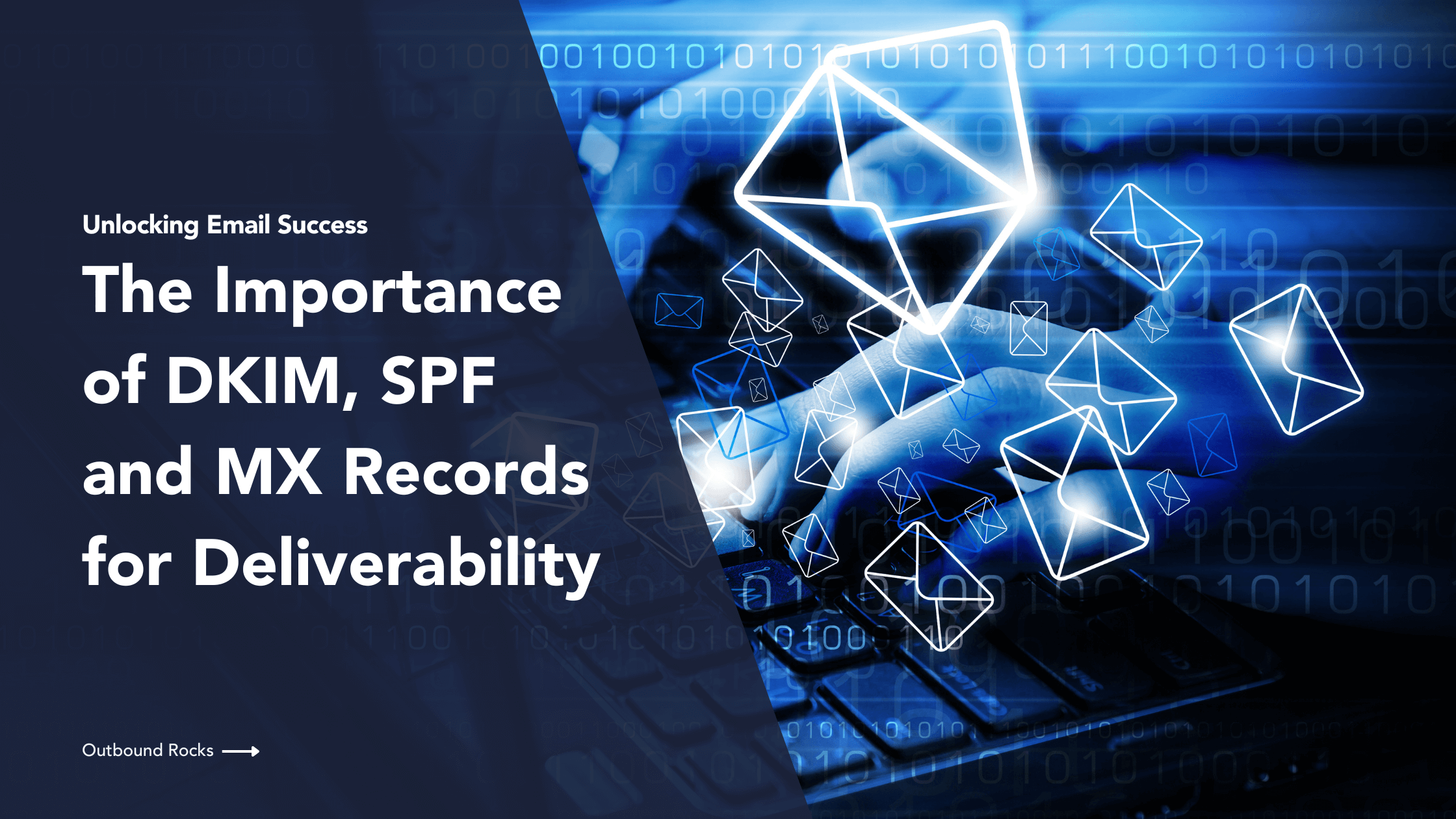Do you understand the importance of email authentication records?
Acronyms like DKIM, SPF, DMARC, and MX Records may seem confusing at first, but they play a critical role in ensuring that your emails find their way into your leads’ inboxes.
In this article, we’ll embark on a brief exploration of each of these authentication pillars and unravel their significance in the email delivery landscape.
Learn about DKIM, DMARC, SPF and MX records, and decipher the language of email authentication so you can communicate seamlessly and with confidence.
TABLE OF CONTENTS
– Importance of email authentication records
– Benefits of email authentication records
– DKIM
– SPF
– DMARC
– MX Records
– Conclusions
Importance of email authentication records
Email authentication is a set of techniques and protocols used to verify the legitimacy of an email sender and ensure the integrity of the message.
This involves confirming that an email actually originated from the domain it claims to have come from and hasn’t been tampered with in transit.
To sum up, authentication methods such as DKIM or DMARC work together to validate the identity of the sender and protect against phishing attacks.
Benefits of email authentication records
By implementing email authentication practices, organizations and individuals can build trust and protect their recipients from malicious or unauthorized email activity.
In other words:
- When your emails pass these authentication checks, they are more likely to be delivered directly to recipients’ inboxes rather than marked as spam or junk.
- By confirming the authenticity of the sender, organizations can prevent bad actors from impersonating their brand or domain.
- When your emails consistently pass authentication checks, it signals to email service providers that you are a legitimate sender committed to industry standards.
In conclusion, email authentication acts as a digital seal of approval, guaranteeing the authenticity of the sender and increasing the reliability of the communication channel.
DKIM
DKIM (Domain Keys Identified Mail) serves as an authentication method, informing email service providers whether an email is genuinely associated with the claimed domain.
This prevents unauthorized individuals from sending emails on behalf of legitimate entities, like a random person posing as a Facebook employee.
How do I set up an DKIM record?
Here are the instructions for the main email providers:
SPF
Sender Policy Framework (SPF) provides each email with a “Made in” tag, similar to the origin label on food products.
Just as you’d check the origin of your cheese, SPF allows email providers to check the “Made in” IP address to make sure it matches the claimed domain, preventing email fraud.
How do I set up an SPF record?
Here are the instructions for the major email providers:
DMARC
DMARC (Domain-based Message Authentification, Reporting and Conformance) determines whether an email should be marked as spam or rejected outright.
By confirming the legitimacy of your sent emails, DMARC assures any email service provider that your communication is authentic and from you.
How do I set up an DMARC record?
Here are the instructions for the main email providers:
MX Records
Mail Exchange (MX) records identify the server responsible for handling email sent to your domain. Without properly configured MX records, you will be unable to send or receive email.
How do I set up an MX record?
In short, follow these instructions to set up a DKIM, SPF, DMARC, or MX with your email provider’s .
Conclusions
In summary, we explained how to create a valid record in a few clicks to use in your DNS.
If you want to improve your domain security and email deliverability, you can try Outbound Rocks for free. Fill out the form below and we will contact you shortly!
